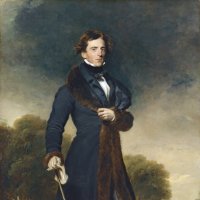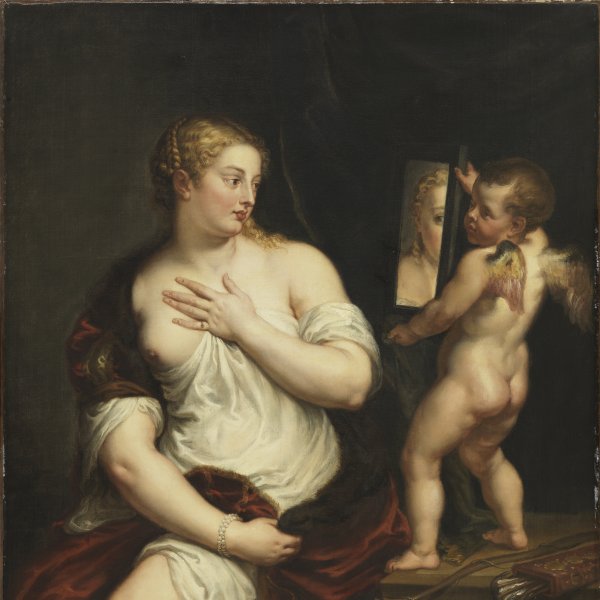Portrait of a Young Woman with a Rosary
This portrait of an unidentified female sitter can be dated to between 1609 and 1610 when Rubens was established in Antwerp following his return from Italy in 1608. The year 1609 saw two important events in his life: his marriage to Isabella Brandt, daughter of the government official and scholar Jan Brandt; and his appointment as official painter to the Archduke and Archduchess Albert and Isabella. They granted him special permission to maintain his residence in Antwerp, as well as lucrative tax benefits and a sizeable annual stipend. Among his obligations as court painter was that of executing a series of portraits of Albert and Isabella intended for members of their family residing at the various courts of Europe.
Rubens divided his time between these obligations for the Governors of the Netherlands with the execution of a wide range of commissions that obliged him to establish and run a large and efficient workshop in response to the increasing demand for his paintings arising from his growing fame. During these early years in Antwerp the artist enjoyed the friendship and support of two leading figures: the burgomaster of the city, Nicolaas Rockox, and the merchant Cornelis van der Gest. It was Rockox who commissioned Rubens’ first major work for the city of Antwerp, namely The Adoration of the Magi, painted for the Chamber of the States and now in the Museo del Prado, Madrid. This canvas, among other works, helped Rubens to gain a wider range of clients and types of commissions, in which portraiture occupied an important role.
Rubens painted a sizeable group of portraits during his first trip to Italy. The innovations that he introduced into this genre, and which laid the basis for the classic Baroque portrait, are to be seen in The Duke of Lerma on Horseback (Museo Nacional del Prado, Madrid), painted during his first trip to Italy in 1603 on a diplomatic mission. This portrait broke away from Renaissance formulas to present the Duke advancing towards the viewer with an enormous impression of force and dynamism.
In the present panel the artist replaced the architectural backgrounds with balustrades and terraces used in his Genoese portraits with a warm red hanging, against which he locates a young woman who is richly dressed and holds a rosary. The costly, elegant nature of her clothes has led to the suggestion that she was an aristocratic member of the court at Brussels. However, it should be noted that in another important portrait, that of The Artist with Isabella Brandt (Alte Pinakothek, Munich), executed around the time of his marriage, Rubens depicted his wife, who was a member of the prosperous Antwerp middle classes, in equally fine clothes. The different effects and textures of the lace ruff, sleeves and headdress, the silver tones of the bodice with its gold embroidery, the gradations on the black dress and the reflections on the glass rosary, all recall the style of his portraits of Genoese aristocrats.
The fact that the present sitter holds a rosary, a manner of prayer encouraged by the Dominicans, has been related to her personal devotional interests, as Gaskell noted. The Virgin gave a rosary of roses to Saint Dominic of Guzmán, founder of the Order, which he used in his victory over the Albigensian heretics.
The setting and pose of the figure in the present panel have been compared to those in the Portrait of Éleanor of Bourbon, Princess of Orange in the Frick Art and Historical Center, Pittsburgh. In addition, Müller Hofstede compared it to Portrait of a Man in a private collection in Munich, which he suggested as a possible pair to this panel. It is thought that the present work could have been in the private collection of Rubens’ heirs. It might have belonged to Philippe van Parys, the husband of Rubens’ daughter Clara Johanna, and to Philippe-Constant van Parys and his wife Catalina, who was the painter’s niece. The oil remained in the family until 1853 when it was auctioned in Brussels. After that it was to be found in various private collections and with several dealers before it was acquired in Rome for the Thyssen-Bornemisza collection in 1979.
Mar Borobia











